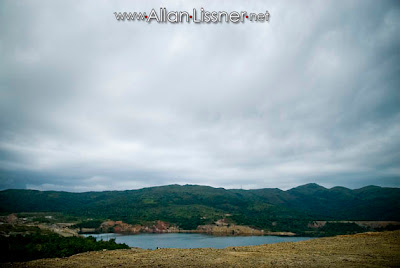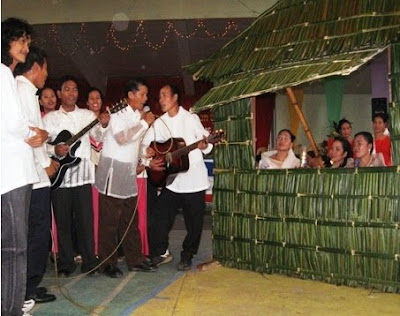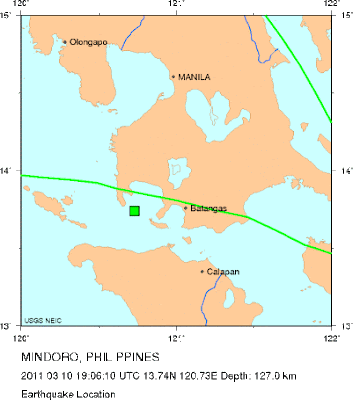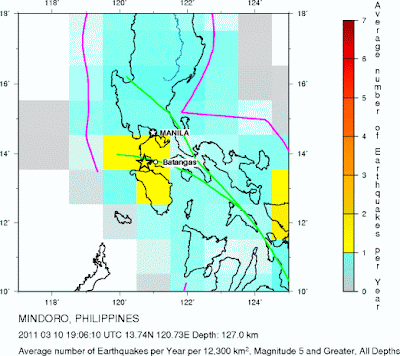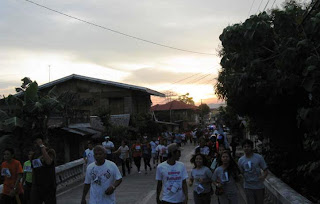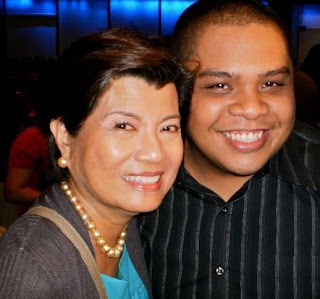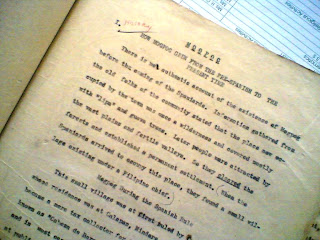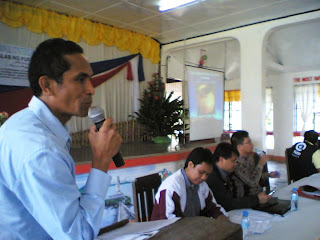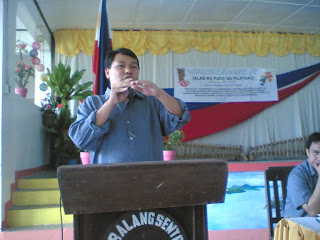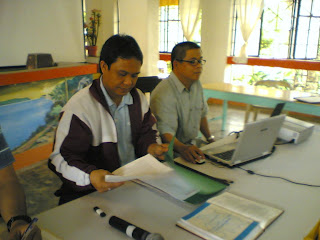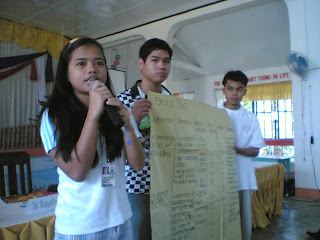
Wow Bellarocca rocks, Wow Marinduque rocks, but nay, its airport badly rocks!
MARINDUQUE AS ONE OF WORLD'S TOP ISLANDS
According to an article by Philstar’s Tanya T. Lara
(“Bellarocca rocks”) ,
The West Australian’s John Borthwick travelled all over and chose top 10 islands in the world with Marinduque landing in the number two spot in a list that came out just last month.
Tanya also quoted
CNN’s Tiffany Lam saying last year to travellers going for the
“next-gen Asia tourist hotspot” to “
forget Phuket”, as she pinpointed the island of Marinduque as Asia’s next major tourism destination. Tanya further said that
Elle Canada was of the opinion that whereas Phuket may have been the great island destination to flock several years ago, Marinduque is the “now” island. But we've also heard that before.

MARINDUQUE'S RIVAL INVESTING BILLIONS OF DOLLARS!
Marinduque’s rival in Asia according to Lam is Phu Quoc in Southern Vietnam that has beaches, diving spots and a distinct regional character. So the Vietnamese government is working furiously to flesh out the island’s tourist potential, licensing out infrastructural projects worth US$ 1.7 billion for the island, mostly for resorts along the coast. It is said that the island’s International Airport, worth US910 million is set to be completed in 2012.
But many travel and tourism orgs in Australia are still one in raving, singing about Marinduque!

THE CHARM OF BELLAROCCA, THE CALM OF MARINDUQUE
Of course, foreign correspondents talk about Marinduque with Bellarocca, the sole concession to luxe tourism, in mind. But what they experienced in Bellarocca is the same as what tourists experience in the rest of the island.
“There is no Starbucks in this volcanic Philippine island - life in Marinduque calls for calmer pace. (Think white sand and sulfuric hot springs!)”, said one. And that’s Marinduque’s character.
 “There are no sleek nightclubs, bars or tacky souvenir shops”,
“There are no sleek nightclubs, bars or tacky souvenir shops”, yet another one again declares:
“Beware the next Phuket!”
So now, people outside the Philippines are convinced and telling themselves, in no uncertain terms, that Marinduque’s got everything it would take to be THE DESTINATION, THE TOURISM PRODUCT of the
NOW. Come to think of it, we, Marinduquenos, are not exactly the last to know that we’re a warm and peace-loving people
(except during elections that just break that spell), with a rich culture and unique historical heritage that in itself sells.

Our towns exude reminiscences of a bygone era, the very same thing that lures tourists to Vigan. Caves, waterfalls, white sand beaches and other shores in various shades and character abound; sulfur spring, hot spring, almost everything.

SO IS MARINDUQUE READY FOR TAKE-OFF?
Not quite. But why doesn’t Marinduque tourism really take off and
FLY? Truth is, even with its closeness to Metro Manila we are
NOT THAT ACCESSIBLE anymore. Tourists are tempted to choose other destinations instead of spending 10 hours of land-and-sea travel to Marinduque. Many airlines wanted to fly to this paradise of an island, but simply couldn’t because of a forlorn and dilapidated airport runway.

The travel media was ecstatic upon learning that up to last year, two domestic airlines have connected the island to Manila, but are hardly aware of the bigger picture. Only one airline's left now.
THE AIRPORT IN RETROSPECT
To think that way back in the early 60’s, all domestic airlines plied to Marinduque:
Air Manila, Fairways, Philippine Airlines. There was even a time when PAL flew in 12 times in a week!
Long before the world ever heard of the
Ati-atihan, Sinulog, Dinagyang and other festivals, there was, already, talk about the
Moriones, and tourists came, such that the business community started building small resorts - there was real need to even encourage homestay programs to accommodate visitors in the absence of enough places to stay.
Air transport was very much instrumental in providing the needed boost during the initial stage of the innovative million-peso trading of pupae and butterfly with buyers meeting their suppliers at the airport. The current state of the airport is not helping this industry now. Air transport was also the preferred means to ship carved softwood products in the 80’s, and naturally, the fastest means to transport the sick needing medical intervention, in cases, and there were many, where the main public hospital was unable to help.

AIRPORT WAS CLOSED DOWN
When PAL stopped servicing Marinduque in 1998, the airport was closed down, but re-opened for a couple of years when Asian Spirit plied the Marinduque route. Then the roar of airplanes were not heard of again until some five years later, in 2008. By then, Bellarocca was starting to ecstatically rock the environs.
SO HOW'S THE AIRPORT NOW?
The Marinduque airport is classified as Principal Class 2 - that means airports used for prop aircraft which has equal to or more than 19-seat capacity.
(Principal Class 1 is for jet aircraft which has equal to or more than 100-seats capacity).
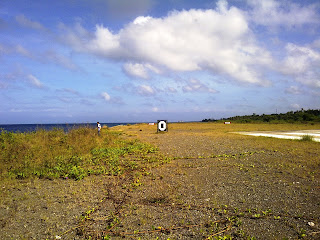
The length of its runway is 1400m, enough to improve management of the airport system and enhance civil aviation safety. 770m of the runway was cemented in the late 90’s, but that’s 200m short of the minimum runway requirement for aircraft which is 900m. You might say therefore that the Marinduque airport is suited to the more daring of aircrafts or pilots.


This means 770m of concrete runway exists on one side close to the beach, nearly 200m on the opposite side near a rice-field was merely covered with asphalt that, in fact there’s a lengthy 630m altogether of runway that's simply rundown, with potholes, crushed rocks and compacted soil almost without any trace of the asphalt that glued them together decades and decades ago. That’s the real danger, the shaky, risky, rocky part.

CONCRETING OF RAMP AND TAXIWAY ONGOING, BUT...
Yes, something’s going on now. Concreting of the apron and taxiway costing P 20-million from the GAA 2009 budget is in progress. Apron or ramp is where the aircraft parks to load or unload passengers and cargoes. This intervention certainly improves the airport but does not solve the major, major runway problem that would attract other airlines. One that would make Bellarocca happier, eventually open the eyes of Marinduquenos for the new opportunities that increased tourist influx would bring.

Major airlines like
Cebu Pacific, Seair, Air Philippines, all bullish to fly here, had variously sent their personnel to conduct technical inspection. But even
Zestair that currently flies four times a week only could not increase flight frequency lest its aircraft's wheels would suffer from physical damage more frequently and seriously.
Seair that used to fly three times a week using LET410 aircrafts, but had to be suspended for major aircraft systems safety modifications, was willing to continue flying to Marinduque with their Dornier 328, but could not land those aircrafts under the present condition of the runway.
SOME INTROSPECTION PLEASE
In 2008, the provincial government approached Malacanang for the repair of the runway, got the nod of CAAP-DOTC, and when nothing happened reiterated the same request to Veep Noli De Castro in 2009, when he, as then Cabinet Officer for Regional Development of Mimaropa, visited the province. The municipal government of Gasan where the airport sits, made a similar request through a resolution to the Civil Aviation Authority of the Philippines (CAAP) specifying the same concern. I was advised that even the socio-civic org, the Marinduque First Saturday Club, Inc. spearheaded by Gen. Recaredo Sarmiento II (Ret.) lobbied seriously, and independently, with the DOTC for the same reason.
The project that has been in the pipeline for long just remained a pipedream. There were reports that other political voices blatantly played around in the main halls of power with some kind of discordant overtures.
Congressman Velasco recently held talks with DOTC top brass for inclusion of Marinduque in the 2011 DOTC priority airport project for the much-needed concreting of the rest of the runway. There’s P35M for 2011 with the CAAP per then ADG Aida Dizon - hardly enough even for resurfacing of the asphalt section of the runway. Resorting to plain resurfacing of the area, not concreting the runway, would require at least P60M according to a DOTC source and it would be rundown in just five years. Reduced to just compacted rocks and soil, as it looks today, according to an airport source.
"MATUWID NA DAAN"
P150M, the estimate of how much it would cost to rehabilitate the airport system is what it would also normally cost to build a 15km highway. Wouldn’t it be so worth it, then, for the administration of President Aquino to invest that much for the airport rehabilitation of Philippine's
“next-gen Asia tourist hotspot”? The
“now” island, second on the list of the world’s most beautiful islands?
The island that remained very poor and very peaceful even with the rape of its natural treasures by one of the world’s biggest mining concerns? The mining industry that benefitted the country’s coffers, not this island’s nor her poor people, continuously exploited up to the present day?
Wouldn’t that be a just and meaningful application of President Noynoy's
“matuwid na daan” ideation? That Marinduquenos will sing in unison:
"at last!"

Just look again at how much the rivals are spending in billions of U.S. dollars. That quoted amount is much less than the annual 20% development fund of the province which hardly makes a dent in our humdrum lives.
Is P. 150M so big for Marinduquenos to pray for when other provinces have been the recipients of billions of pesos in development funds? Give us, Marinduquenos, a break we implore! The DOTC 2011 budget for airport and port rehab is P 1.065-B!
Then Marinduque tourism would fly and soar, the rest of the world would be pleased, and pay more serious attention to Philippine tourism zooming in on Marinduque, where the heart, really is!



